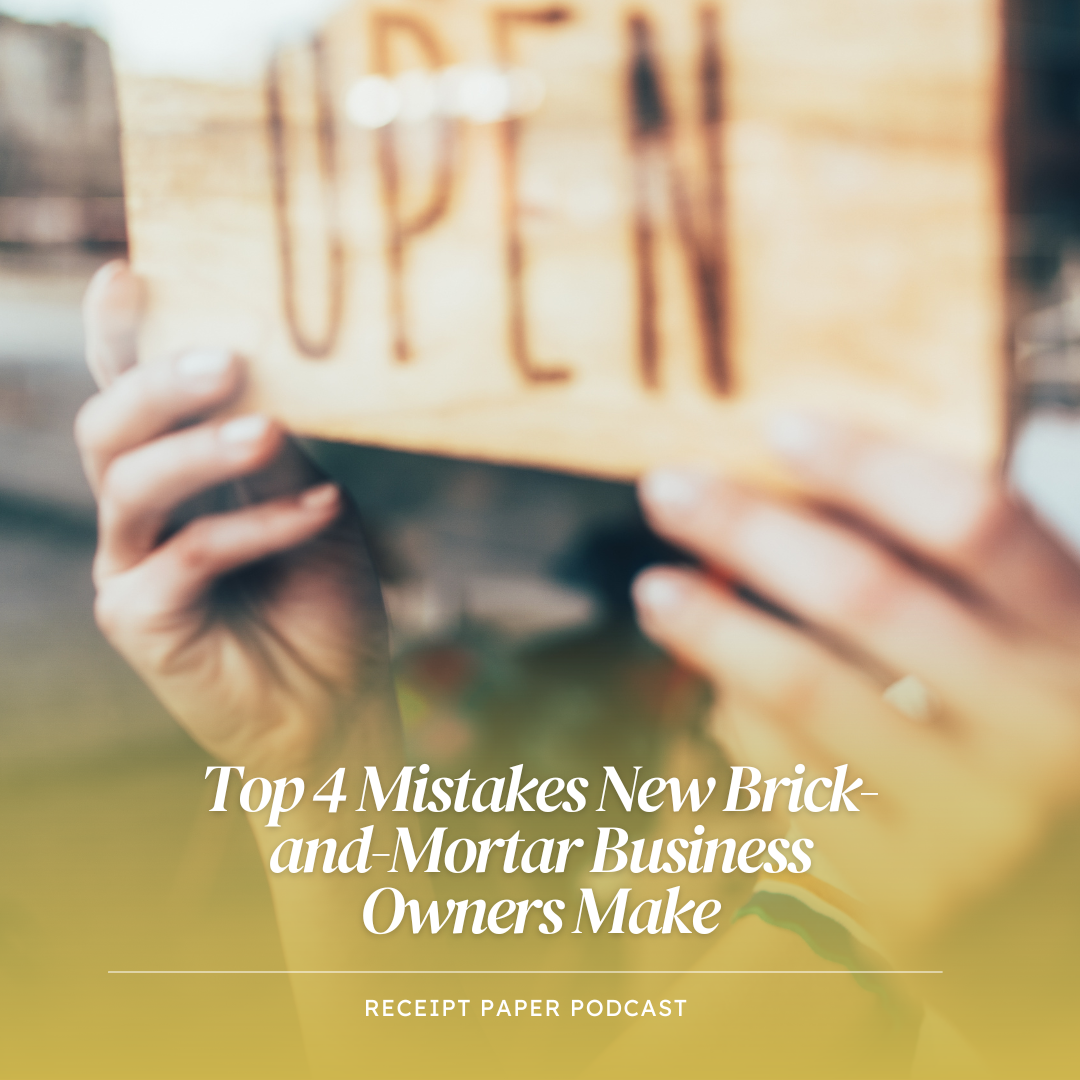Apple Podcasts | Spotify | Stitcher
One of the biggest challenges for new brick-and-mortar business owners is understanding the pitfalls to avoid. While many opt for intuitive strategies, there are some common missteps that can hinder your success. Starting a new business is exciting, but also packed with potential pitfalls that you don’t want to overlook. Trust me when I say, you don’t want to learn these lessons the hard way. So, let’s chat about the four big no-nos you need to steer clear of as a new storefront business owner. In this episode, I’m going to share a little tough-love, but I promise it’s only with your business success in mind.
Why is a strong strategy crucial for your brick-and-mortar business?
For a brick-and-mortar business, the foundation isn’t just about the physical location; it’s about creating a sustainable model that drives growth and customer loyalty. This involves not only understanding your products and market but also ensuring you have the right systems and strategies in place.
A strong foundation in a physical business is like the roots of a tree. It supports growth, provides stability during tough times, and ensures longevity. It’s about more than just opening your doors to the public; it’s about creating an experience and a brand that resonates with your customers and stands the test of time.
Four Mistakes to Avoid as a New (or current) Brick-and-Mortar Business Owner
To help you navigate the early stages of your business, I want to highlight four common mistakes that new owners often make. These insights are from both personal experience and from working with countless students over the years.
Not Collecting Customer Data from Day One
In the digital age, customer data is gold. It’s not just about having a list of names, but about understanding your customers’ behaviors, preferences, and needs. Failing to collect customer data such as email addresses and phone numbers from the outset is a missed opportunity for future marketing and relationship building.
Start building your customer database from day one. Encourage customers to leave their contact details in exchange for future discounts, loyalty programs or informative newsletters. This data will become invaluable for targeted marketing campaigns, personalized offers, and building long-term relationships with your customers.
Not Having an Emergency Fund
Unexpected situations, like economic downturns or sudden maintenance needs, can arise at any moment. Look at how many businesses didn’t survive the scary days of the Covid-19 pandemic? An emergency fund covering 3-6 months of expenses is crucial for weathering these storms without crippling your business. But pandemics aren’t the only reason. As a new business owner, you will be figuring out your ebbs and flows of business. Some seasons will be busier than others and having an emergency fund will help you navigate the rollercoaster in the first couple years until you learn to capitalize on those seasons as an experienced business owner.
Consider this fund your safety net. It’s there to ensure that even in hard times, you can keep the lights on, pay your employees (and yourself!), and maintain your inventory. Start setting aside a portion of your earnings from day one to build this fund if you don’t have it already. It’s a buffer that could mean the difference between surviving a tough period and closing your doors.
Skimping on Marketing
One of the biggest mistakes new owners make is underestimating the power of marketing. In a world where consumers are bombarded with choices, standing out is key. Investing in marketing is not just a suggestion; it’s a necessity for attracting and retaining customers and growing your business. New businesses often miss the power of being a NEW business and how precious that time is to market and get potential customers through the door.
Develop a comprehensive marketing plan that includes local advertising, social media presence, and community engagement. Marketing is an ongoing process, not a one-off task. It’s essential for creating brand awareness and driving foot traffic to your store.
Neglecting the In-Store Customer Experience
Finally, the in-store experience is what sets brick-and-mortar stores apart from online shopping. Neglecting this aspect can lead to a decline in repeat customers. Your store should not just be a place to buy things; it should be an experience that customers remember and want to return to time and time again.
Focus on creating an inviting atmosphere, train your staff to provide excellent customer service, and ensure your store is providing an EXPERIENCE, not just a product or a service. Small details like lighting, music, and store cleanliness can significantly impact the overall customer experience.
By avoiding these common mistakes, you’ll be well on your way to establishing a thriving brick-and-mortar business. If you are already open, it is never too late to implement these strategies. Remember, it’s about building a brand and experience that resonates with your customers, and that starts with a strong foundation.
Links Mentioned in this Episode:
- Free Masterclass: 5 Things You Need to Know Before You Open
- Enroll in Brick N’ Mortar Academy
- Tap Mango: Our Preferred Customer Rewards Platform
- Follow us on Instagram
Subscribe & Review in iTunes
Are you subscribed to our podcast? If you’re not, we want to encourage you to do that today. We don’t want you to miss out on valuable information that can help you grow your business. Click here to subscribe in iTunes!
Now if you’re feeling extra nice today, we would be really grateful if you left us a review over on iTunes, too. Those reviews help other people find our podcast and they’re also fun for us to go in and read. Just click here to review, select “Ratings and Reviews” and “Write a Review” and let me know what your favorite part of the podcast is. Thank you!

+ show Comments
- Hide Comments
add a comment